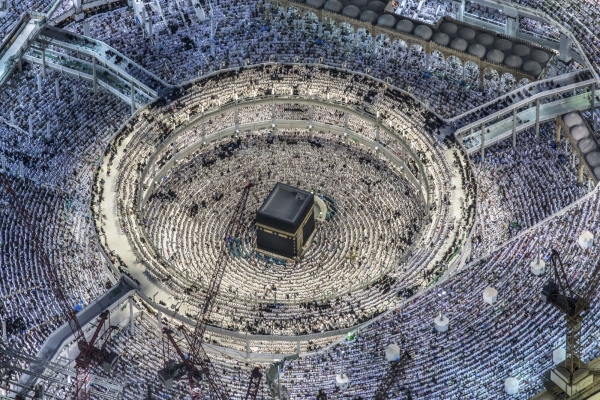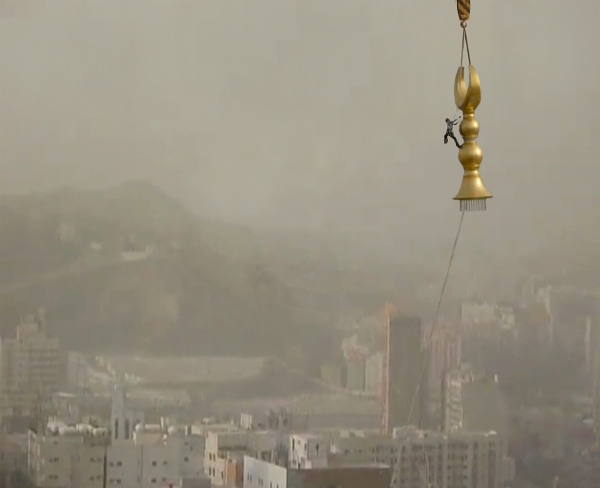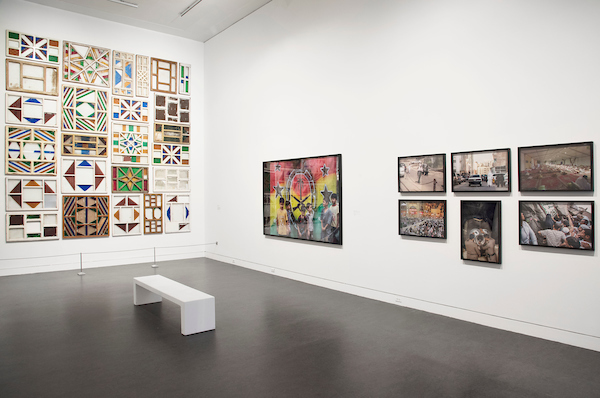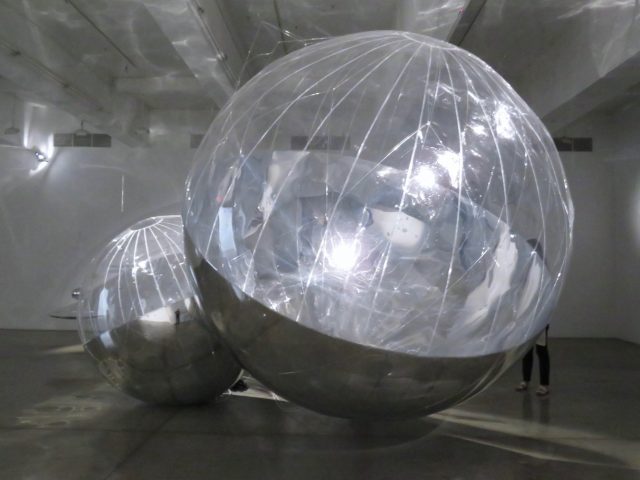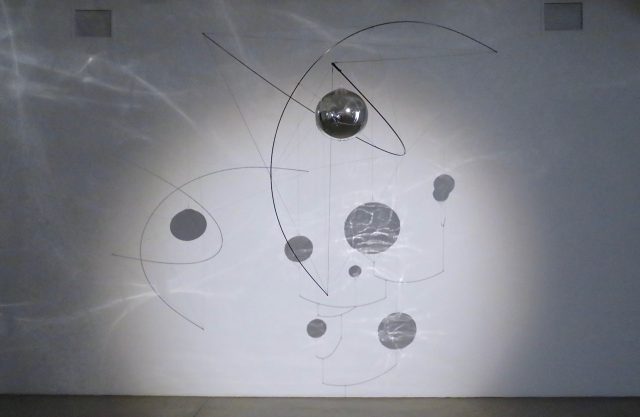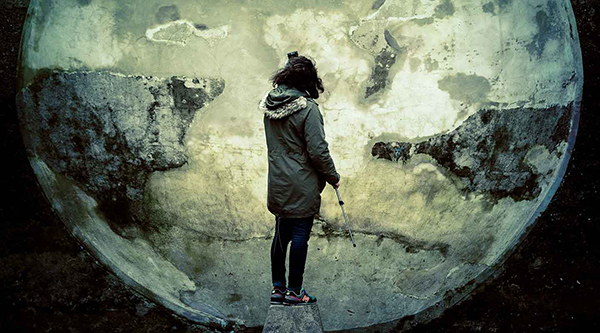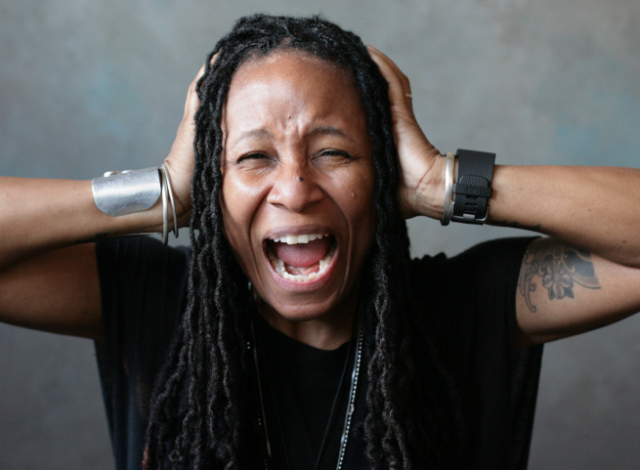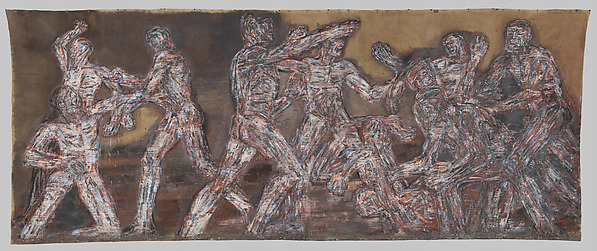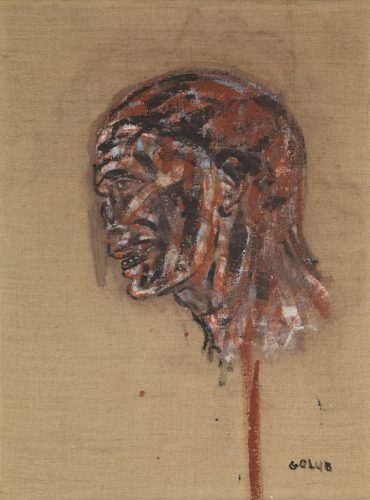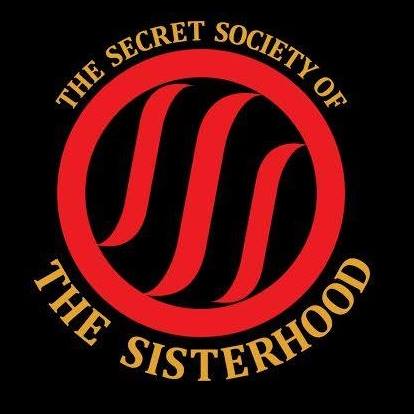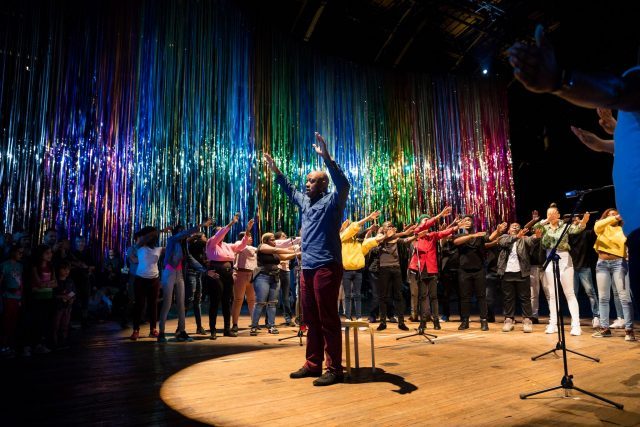
Jorell Williams holds his hands up near the beginning of Nick Cave’s Up Right presentation at the Park Avenue Armory (photo by James Ewing)
Park Avenue Armory and other locations
Wade Thompson Drill Hall
643 Park Ave. between 66th & 67th Sts.
Through July 1, $17-$45
www.armoryonpark.org
nickcaveart.com
Multidisciplinary artist and fashion educator Nick Cave offers relief and release from these hard times with Up Right, a ritual-laden immersive performance that slowly builds to an explosive dance party in the massive Wade Thompson Drill Hall in the Park Avenue Armory, part of his major installation The Let Go. As visitors enter the hall, they encounter the hundred-foot-long, forty-foot-high “chase,” two enormous curtains made of many-colored Mylar strips, representing social justice, that glitter in the light as they glide across the space. You can walk through them, but don’t sit on any of the small stools among them, which are for the performers. Ticket holders sit on the periphery on the floor, on benches, or in folding chairs as the curtains stop moving and Darrell Nickens begins playing the piano. Members of Vy Higginsen’s Sing Harlem Choir, consisting primarily of teen girls of color, enter the room, followed by a dozen men with their hands up, in the now-all-too-familiar “Don’t shoot” pose. Jorell Williams starts singing the gospel classic “Wonderful Change” while he and the other men sit in the stools and are dressed by men and women in white lab coats, putting them in Cave’s shaman-like soundsuits, made of colorful accessories that completely cover the body, hiding their gender, age, race, ethnicity, etc. The Sing Harlem Choir then performs a gospel version of Rodgers and Hammerstein’s “You’ll Never Walk Alone,” from Carousel, as the men in the soundsuits march and dance around the room to choreography by Francesca Harper and Cave and approach some audience members, taking their hands and making connections. It’s all rather tame, obvious, overly simplistic, and repetitive, like the United Colors of Benetton telling us that we can indeed all get along. But after the ninety-minute show, the hall turns into a dance party where some of the performers return and move and groove to the hot beats with anyone who wants to now cut loose as “chase” winds around the space again.
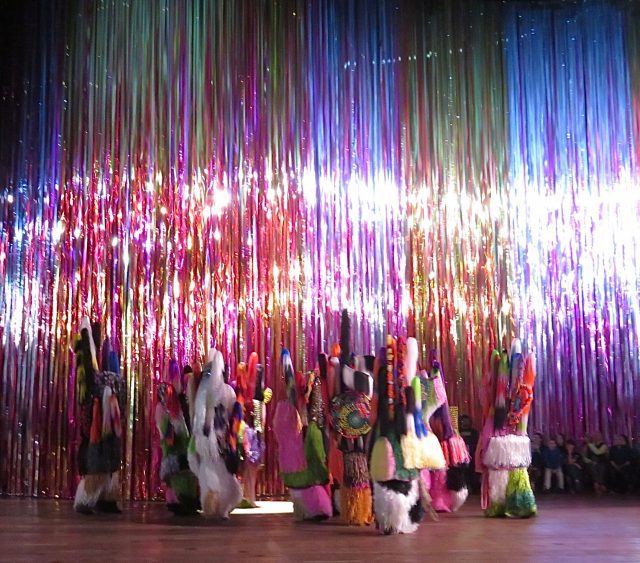
Nick Cave’s soundsuits are activated as part of The Let Go (photo by twi-ny/mdr)
Taking place Wednesdays through Fridays through July 1, Up Right ($35, 8:00) is only one of a number of Let Go programs that are part of the installation, which is curated by Tom Eccles. On Saturdays and Sundays, the general installation is open to the public ($17, 11:00 am to 6:00 pm), with DJs getting things rocking at 2:00, including Joe Claussell on June 16, JD Samson on June 17, Noise Cans on June 23, Sabine Blaizin on June 24, Sammy Jo on June 30, and Tedd Patterson on July 1, with games of Twister, Soul Train lines, soundsuit invasions, a special line dance that you can rehearse here, and more. Numerous sections of the soundsuits are on display in various period rooms, bursting with color and mystery. On June 14 ($25, 7:00), the Freedom Ball should be a splashy evening of fashion, music, and dance, hosted by Matthew Placek and featuring Marshall Jefferson, Ladyfag, Papi Juice, Saada of Everyday People, and others. There will be a Dress to Express ball-style costume contest at 11:00 with $20,000 in prize money spread around three categories, State of the World, Unlike Anything Else, and Dare-Flair; among the judges are artist Mickalene Thomas, art collector and consultant Racquel Chevremon, and Cave. And on June 26 ($45, 7:30), “An Evening of Artistic Responses: The Let Go” brings together songwriter and musician Nona Hendryx, vocalist and artist Helga Davis, dancer and choreographer Harper, and FLEXN dance pioneer Reggie (Regg Roc) Gray and the D.R.E.A.M. Ring for site-specific performative responses curated by Cave, who in 2013 transformed Grand Central Terminal’s Vanderbilt Hall into a wildly inventive petting zoo for “Heard•NY.”
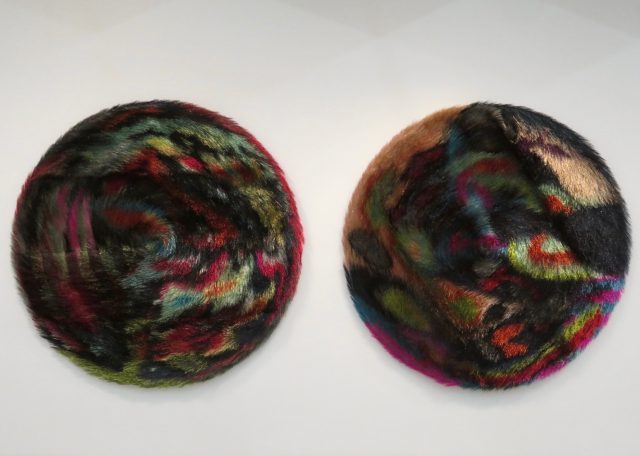
Nick Cave’s Tondos deliver a critical message in “Weather or Not” at Jack Shainman Gallery in Chelsea (photo by twi-ny/mdr)
Cave fans will also want to check out “These bags we carry are filled with promise,” the new kaleidoscopic three-dimensional mural he and his design collaborator, Bob Faust, have installed in the lobby of New York Live Arts; the opening reception is June 15 from 4:30 to 6:30. On view through September, the soundsuit mural is made from woven bags and is meant to represent the hopes, dreams, and aspirations we all carry inside us but don’t always let out. And through June 23, Cave’s “Weather or Not” exhibition at Jack Shainman in Chelsea is a gorgeous collection of eye-catching wire Tondos that swirl with life on the walls; the mesmerizing, bold colors are based on weather patterns, but they’re superimposed on barely visible scans of the brains of black youths suffering from PTSD because of gun violence. As always, Cave offers beauty and originality tinged with both hope and fear.
